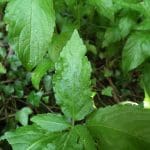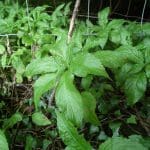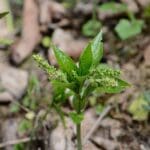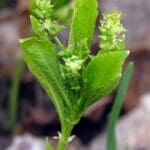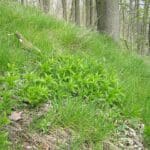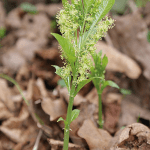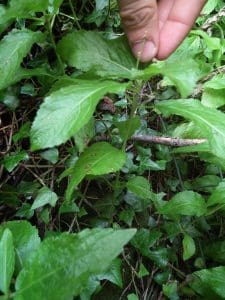Dog’s Mercury / Spring / Summer / Toxic
Common Names
Dog’s Mercury, Dog’s Cole
Botanical Name
Mercurialis Perennis
Scientific Classification
Kingdom – Plantae
Order –Malpighiales
Family – Euphorbiaceae
Physical Characteristics for Dog’s Mercury
Leaves
Green, single leaves, lanceolate in shape which are serrated.
Flowers
Male flowers grow up a short stem, the flowers are small, pale green with creamy coloured anthers.
The female flowers have shorter flower stems and at the top of the stem are a pair of sphere shaped lobes with tiny petals emerging from the top.
Stems
Single rounded stems with leaves growing in pairs at intervals up the stem.
Habitat
This is a common plant in Europe including Britain and South West Asia.
Find it in dappled shade in woodlands, hedgerows and gardens.
Known Hazards
The whole plant is toxic. Mercurialine is one of the main compounds in this plant. It is known to induce haemorrhaging and inflammation of the gastrointestinal tract and kidneys. It will induce drowsiness and mild muscular spasms. Symptoms of poisoning appear within a few hours; they include vomiting, pain, gastric and kidney inflammation and sometimes inflammation of the cheeks and jaw. Larger doses cause lethargy, jaundice, painful urination and coma.
And as the name suggests it’s also toxic to dogs.
Could be Confused with
Dog’s Mercury is quite distinctive and doesn’t have many look a likes, but the leaves could be confused with those of an Elder tree (Sambucus nigra). The main issues with this plant is that it grows within other woodland plants such as wild garlic and could accidentally be harvested with edible leaves.
Edible Uses
None. The whole plant is toxic.
Notes on Herbal uses
Dog’s mercury is poisonous by itself but a thorough drying/heating process is able to destroy its poisonous quality. The juice of the plant is emetic, ophthalmic and purgative. It can be used externally to treat menstrual pain, ear, and eye problems, warts, and sores. A lotion can be made from the plant for antiseptic external dressing due to its ability to soften and moisturise the skin. Although we personally wouldn’t recommend this.
Extra notes from the Foragers
A fine blue dye can be obtained from the leaves although it is able to be turned red by acids and destroyed by alkalis. It is often permanent and the colour is similar to indigo.
References
https://www.woodlandtrust.org.uk/trees-woods-and-wildlife/plants/wild-flowers/dogs-mercury/




